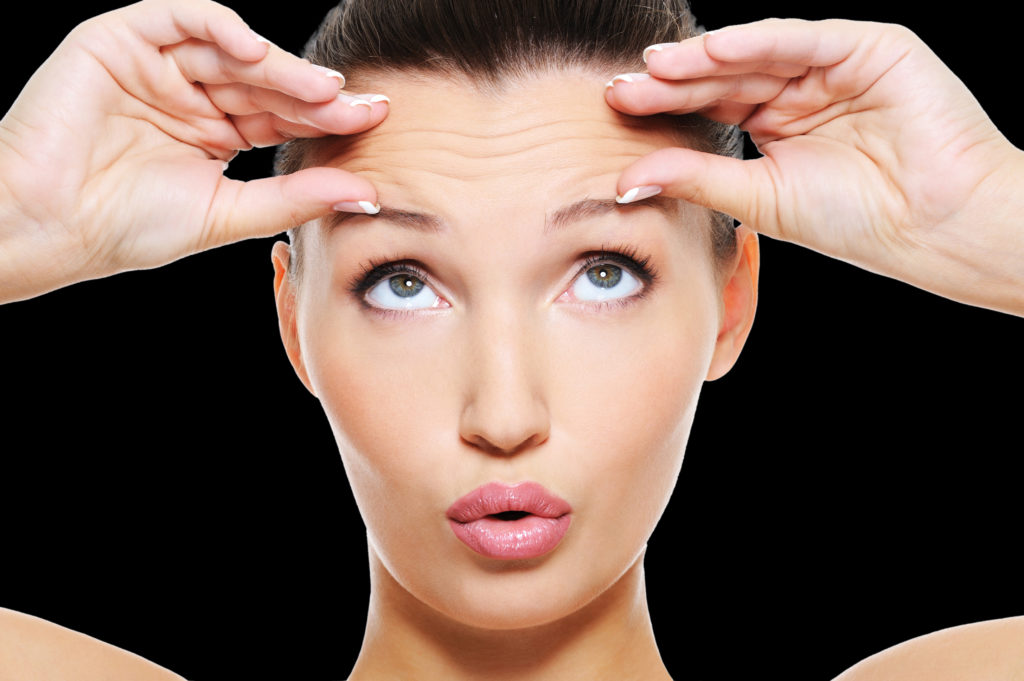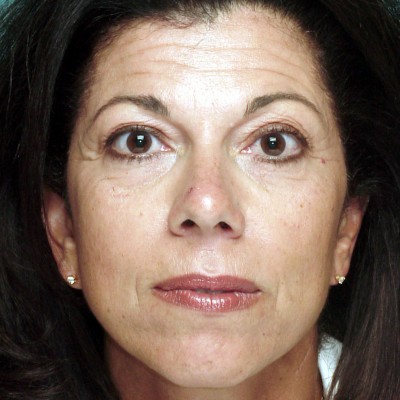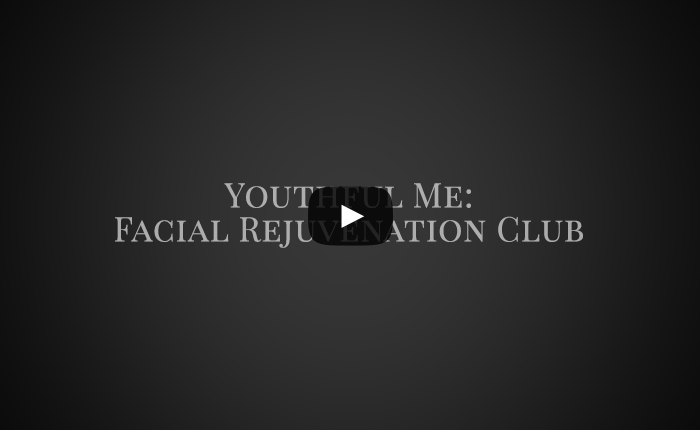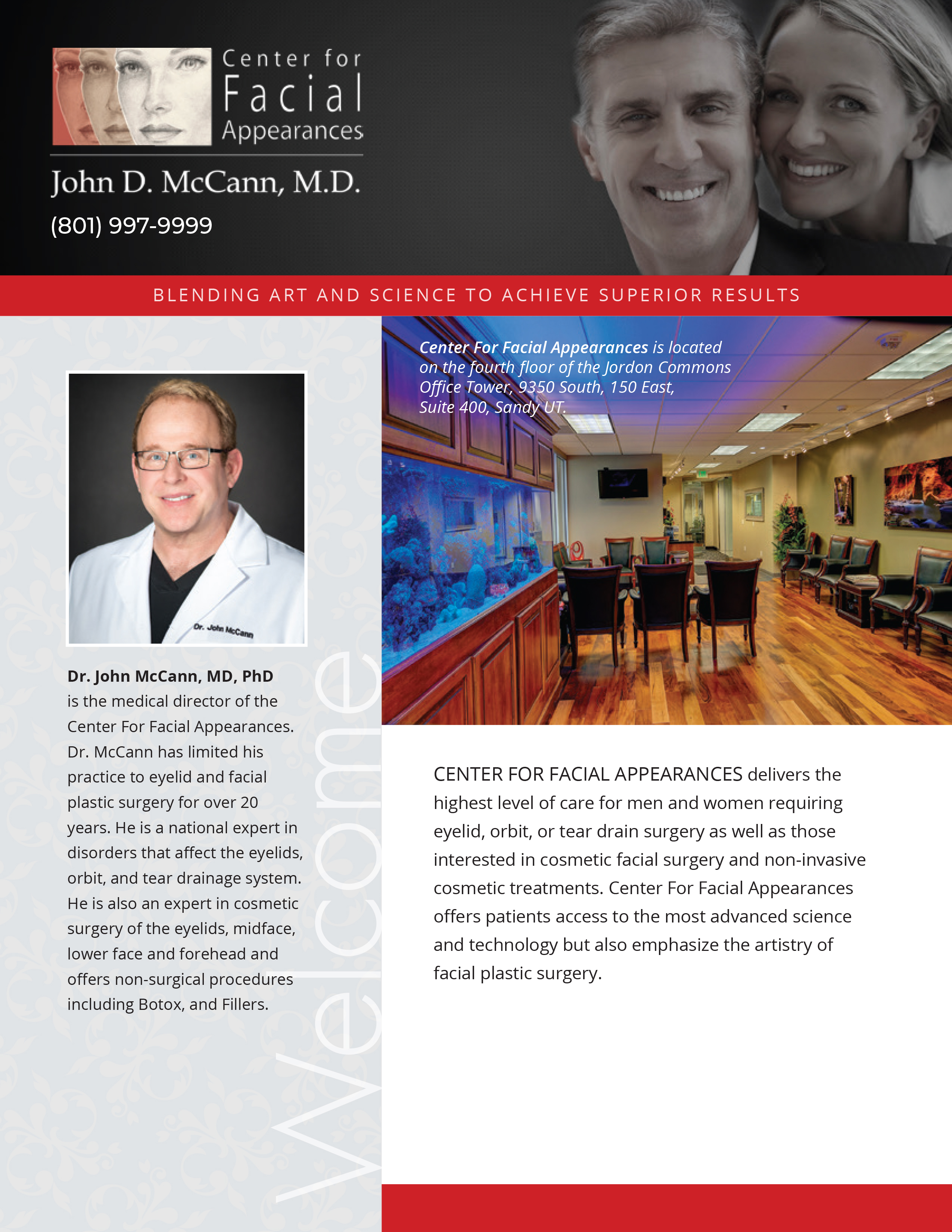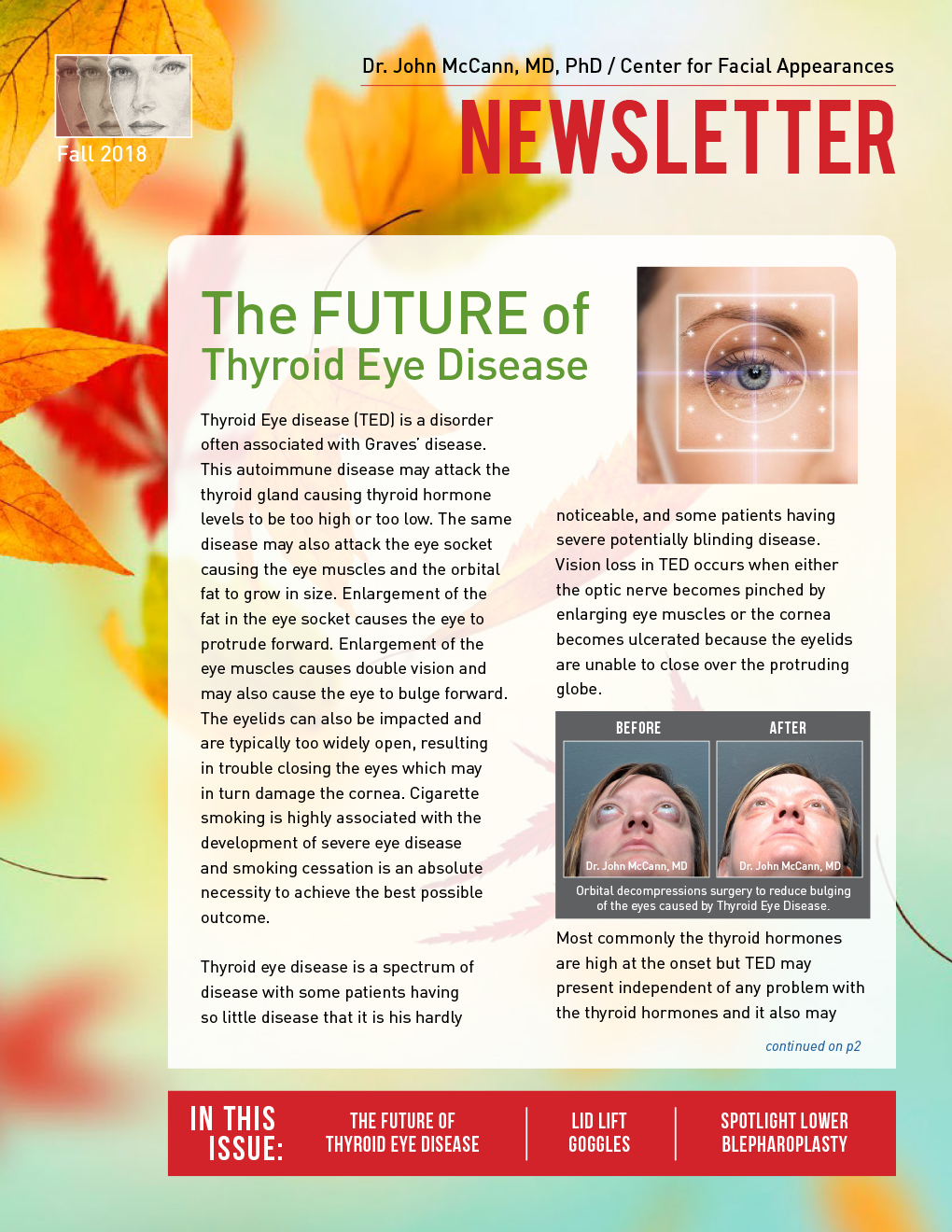Botox Procedures in Utah
Do you have wrinkles between the brows, in the forehead, or in the crows feet area that are made worse when you smile or frown? Do others sometimes misunderstand those lines between your brows to mean that you to be concerned or mad when you are not? Do you have a tendency to lift your eyebrows exacerbating the horizontal lines on your forehead? Are you interested in reversing some of the signs of aging while at the same time creating a facial appearance that is more relaxed, and more approachable? Do you feel more comfortable getting Botox performed by an experienced facial plastic surgeon but at prices that are competitive with medical spas? If you answered yes to any of the above then Dr. McCann may be able to help with Botox treatments.
Botox treatments are the most common cosmetic procedure performed in the US and continue to grow in popularity. The Center for Facial Appearances is a top user of Botox in the intermountain west. Dr. McCann has been an innovator in the use of Botox. He has taught many of the area physicians injection technique via the Botox National Education Faculty program. Dr. McCann gives all Botox treatments at The Center for Facial Appearances.
The Center for Facial Appearances encourages patients who receive Botox treatments to join Club Youthful Me. Club members pay for Botox treatments on a monthly basis and receive substantial discounts through the Club as well as through rebates offered by Allergan, the maker of Botox. Club Youthful Me allows patients to receive treatments by a skilled physician and surgeon at a medical practice at prices that are competitive with Medical Spas.
Botox is a purified protein that relaxes muscles by blocking nerve impulses. Tiny doses are injected under the skin to eliminate wrinkles and expression lines. Areas treated with Botox include the forehead, frown lines, crow’s feet, lips, chin, and neck bands. Many patients get Botox injections over the lunch hour and return to work with no sign of having been treated. The combination of topical anesthetic and a tiny needle makes Botox treatments a painless experience that requires no recovery. It takes Botox 3 days to relax the wrinkles and the effect lasts 3-6 months.
Botox is also used at The Center to treat patients with spasms of the eyelids, face, and neck. In addition, it has proven very useful in treating excess sweating of the hands, feet and armpits, as well as an excellent treatment for Migraine and Stress headaches. Many insurance companies will pay for Botox to treat chronic migraine headaches that are resistant to conventional therapy.
Frequently asked questions about BOTOX®
Background information
Is Botox popular?
For the last several years Botox has been the most popular physician-administered cosmetic procedure in the US. More than 3 million treatments with Botox are administered per year.
Why is Botox so popular?
A number of factors account for the popularity of Botox. First of all Botox causes a consistent beneficial improvement in appearance that is noticeable, yet subtle, and natural. Botox has the highest satisfaction rating of any procedure performed at the Center for Facial Appearances. Botox has been used in millions of patients and found to be safe. Finally, Botox does not require time off of work or out of the public eye to recover.
What is Botox?
Botox is a pure protein that is isolated from a microorganism. Many of the most important drugs we use today such as antibiotics were first isolated from microorganisms.
Is Botox new?
Botox has been used in humans for more than 35 years but did not gain approval from the FDA for cosmetic indications until 2002. Botox was purified in the 1940’s. The FDA approved testing it on human subjects in the 1970’s. In 1989 it was approved for clinical use in patients with spasm of the eyelid face or neck muscles, as wells as treatment for some forms of double vision. Most of the initial work leading to FDA approval was done by ophthalmologist. In 2002 the FDA approved Botox for use in wrinkles between the eyebrows. Botox is also approved for treatment of excess sweating termed hyperhidrosis.
Is Botox a type of filler?
Unlike fillers, Botox doesn’t fill in facial lines. Botox relaxes the muscles underneath the skin that cause undesirable wrinkles in the forehead and the area around the eyes.
How does Botox work?
In order for a muscle to contract it requires a nerve signal. Botox blocks this signal at the junction between a nerve and a muscle.
Does Botox work on all wrinkles?
No. Botox works only on wrinkles that are made worse or change with contraction of muscles of facial expression. Classical examples are the wrinkles between the eyebrows that become deeper with frowning. Other areas where Botox is commonly used to reduce wrinkles include the forehead, and the crow’s feet. Examples of wrinkles that do not respond to Botox include wrinkles caused by sagging skin in the upper eyelids or neck.
Who should not use Botox?
Botox should not be used in the presence of an infection at the injection site and in individuals known to be allergic to Botox. Botox should be used with caution in patients with a few rare neurological conditions including: amyotrophic lateral sclerosis, myasthenia gravis, and Lambert-Eaton syndrome.
Is Botox treatment only for rich and famous?
According to a recent survey working mothers between the ages of 40-55 who want to look less stressed are the most common users of Botox. Those with annual income of less than $150,000 per year account for 2/3rds of Botox users. Botox is one of the least expensive facial plastic procedures.
What is Xeomin?
Xeomin is a newer version of the same kind of medication as Botox and it is produced and marketed by a different company. Scientific studies and the experience of doctor John McCann at the Center For Facial Appearances is that Xeomin and Botox are equal products in terms of safety, effectiveness, and duration of action. Some patients may respond better to one than the other product. The biggest difference between the two products is that the name Botox has better name recognition. Xeomin and Botox are both available at the Center For Facial Appearances.
What is Dysport?
Dysport is another medication like Botox produced and marketed by a different company. Dysport is very popular in Europe and less so in the United States. Dysport is safe, effective, and has roughly the same duration of action as Botox. Doctors have found they need to use 2-3 times more Dysport to get the same effect as Botox. Some argue that Dysport spreads out further on the face which may be an advantage on the forehead but a disadvantage where precision is required like around the eyelids. Very few patients in our practice request Dysport so we do not currently stock it.
Botox and the Center for Facial Appearances
Who gives Botox injections at The Center for Facial Appearances?
We have found that our patients prefer having a physician give the injections. So all injections are given by board certified surgeons.
Are the Physicians at the Center for Facial Appearances experienced in giving Botox injections?
Yes. The physicians at the Center for Facial Appearances do more Botox injections than 98% of medical practices in the country. In most years in the last decade we have been the top user of Botox in the intermountain west. The Center for Facial Appearances has also been selected by the company that markets Botox as one of the few practices in the country to act as a training center to teach other physicians proper injection techniques.
How long have physicians at The Center for Facial Appearances been using Botox?
The combined experience of the doctors at the Center for Facial Appearances is greater than four decades.
Does the Center for Facial Appearances “dilute” the Botox?
Botox is shipped from the company as a powder. So it is necessary to add sterile saline in order to inject it. The manufacturers recommend using 1-4 ml of saline per vial of Botox and at the Center for Facial Appearances we follow these recommendations. The amount of sterile saline is important but not as important as the number of units of medication injected. The doctor will discuss how many units are required to treat you. It is not a good idea to try to spread a low number of units across many areas of the face. When this is done the injections are not as effective and do not last long. If your budget is limited then only treat the area that bothers you the most.
Technical aspects of Botox injections
What does a patient need to do to prepare for a Botox injection?
In most cases nothing. Some over the counter medications such as aspirin, Motrin, vitamin E, Ginkgo and glucosamine increase the chance that you will get a bruise at the injection site. If you are taking these medications because your doctor has recommended you do so then continue to take the medication. If it is safe for you to stop for two weeks prior to injection this will reduce your chance of bruising.
Do Botox injections hurt?
Most of the patients at the Center for Facial Appearances report little or no pain. We use the smallest needle possible. Some of our patients also request numbing cream be used. We have the cream available at the center and can even prescribe it for you if you prefer to put it on before coming for your appointment.
What recovery is involved after Botox injections?
One of the great things about Botox injections is that it requires little or no recovery. Immediately after getting injections you will have some small bumps where the injections were given. These bumps are typically gone in an hour. Rarely a patient will get a small bruise. If this occurs and it is bothersome one of the aestheticians at The Center for Facial Appearances can show you how to cover it with makeup. When it occurs, a bruise takes about two weeks to resolve.
How long does it take before I notice the effects of Botox?
About 3 days before you notice anything and the result becomes stronger for about two weeks.
How long does Botox last?
The first time you get injections they last about 3-4 months. If you get them on a regular basis the frequency at which you need to get injections actually decreases. In our experience patient typically require injections 3-4 times the first year, 2-3 times the second year, and twice yearly thereafter.
How much Botox is required to treat wrinkles?
For cosmetic purposes this varies between about 25 and 100 units depending on the number of areas treated and the size of your facial muscles. For instance, treating the wrinkle between your brows requires about 30 units of Botox. If the crows feet, and forehead are also treated it will require 2-3 times more units of Botox. Men often have larger facial muscles and require slightly higher doses.
Safety questions about Botox
Can Botox cause me to develop botulism?
Less than one vial (100 units) of Botox is typically used to treat wrinkles. One vial of Botox cannot cause botulism.
What are the complications that can be seen with Botox?
All medications can cause an allergic reaction. Severe allergy to Botox is rare enough that the doctors at the Center for Facial Appearances have never seen one despite 40 years of combined experience. Transient systemic side effects such as dry mouth and flu-like syndrome are also very rare. Bruising occurs in less than 15% of patients and is typically mild and resolves. Problems with the eyelids or mouth are the major concerns. Drooping of the corner of the mouth or problems with speech can occur if injections are given in the area around the mouth. Drooping of the eyebrow or eyelid can occur when injections are given around the eyes. The risk of complications like a drooping eyelid for forehead can be minimized by having an experienced physician perform the injections. When these side effects occur they resolve when the Botox wears off.
Does Botox build up in the body over time?
No. Botox is broken down by the body.
Can Botox be administered by non-medical personal?
No. Botox should be administered only by experienced medical professionals with special training in cosmetic procedures. At the Center for Facial Appearances all injections are given by board certified cosmetic surgeons.
Botox for headaches
Can Botox help patients that suffer from headaches?
Yes. We have found that patients with both tension headaches and migraine headaches can benefit from Botox injections. We have even had success treating patients that have been resistant to other medications.
Does the Center for Facial Appearances treat headaches with Botox?
Yes.
How can Botox reduce headache symptoms?
In tension headaches it probably works by relaxing muscles. In migraine headaches it probably works by preventing the facial muscles from triggering headaches.
Will my insurance company pay for Botox injections for headaches?
Some insurance companies have begun to pay for this form of treatment. Many still do not. If you live in Utah or the surrounding area you may call the center and our insurance authorization person can provide you with more information.
How often are injections repeated for headaches?
Once every 3-4 months.
Botox for excess sweating (hyperhidrosis)
Can Botox help with excess sweating?
The Center for Facial Appearances performs injections for sweaty armpits, hands, and feet and have found it to be very effective in most patients.
If Botox relaxes muscles why does it also reduce sweating
Botox blocks the nerve impulse to the sweat gland so that the nerve cannot stimulate sweating. The sweat duct and the nerve lie more superficial than the muscle so the injections for sweating are performed in a more superficial location.
How often do the injections need to be repeated for sweating?
The injections are typically repeated two times yearly.
Related Procedures
Dr. McCann offers additional cosmetic treatments. Learn more about them.


